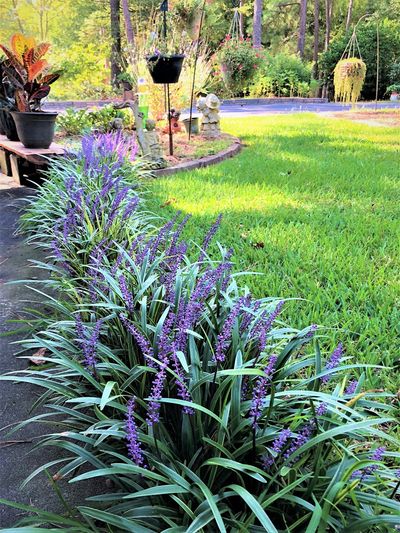What is Monkey Grass?
Monkey grass is a groundcover that looks very similar to turf grass. It is the common name for liriope (Liriope muscari), but it is also referred to as border grass. In addition, monkey grass is oftentimes used as the common name for a similar plant, dwarf mondo grass (Ophiopogon japonicus). Are Liriope and monkey grass the same? In so far as ‘monkey grass’ is often the terminology used for liriope, then yes, which is confusing since mondo grass is also called ‘monkey grass’ and yet liriope and mondo grass are not the same at all. In fact, they aren’t even grasses. Both are members of the Lily family. Dwarf mondo grass has thinner leaves and a finer texture than liriope. As a group, both are referred to as lilyturf.
Types of Monkey Grass
There are quite a few types of monkey grass belonging to one of two genera: Liriope or Ophiopogon. Of these varieties, the most commonly used is L. muscari, which is a clumping form. L. spicata, or creeping liriope, is best used in difficult areas such as on hillsides. It is an aggressive spreader and should only be used in areas that need full coverage, as it will choke out other plants. Of the Ophiopogon genus, the monkey grass most commonly used is O. japonicus, or mondo grass, with fine, dark colored leaves that thrive in shaded areas. There is also the impressive black mondo grass which adds a touch of drama to the landscape. The most popular varieties are Nana, Nippon, and Gyoku-ryu.
How to Use Monkey Grass
Most liriope grows to 10-18 inches (25-46 cm.) in height, although the clumping type spreads to 12-18 inches (30-46 cm.) across. This evergreen groundcover blooms from July to August with white, pink, or purple hued blooms. These spiked blossoms provide a showy contrast against the green foliage and are followed by clusters of black fruit. Monkey grass uses for L. muscari are as a groundcover under trees or shrubs, as low edging plants along paved areas, or as the front of a foundation planting. Due to its rapacious spreading habit, monkey grass uses for L. spicata are generally restricted to use as a ground cover in areas where maximum coverage is desired. Dwarf mondo grass is most often used as a replacement for turf grass, but may also be grown in containers or used as a stand-alone plant.
Caring for Monkey Grass
Once established, both of these “monkey grass” varieties require very little maintenance, as they’re fairly drought tolerant, pest resistant and only needs mowing or pruning once annually. In the lawn, foliage should be mowed in the late winter prior to new growth. Set the mower at its highest cutting height and take care not to injure the crown. Varieties of liriope can be divided every three or four years if additional plants are desired; however, this is not necessary.
